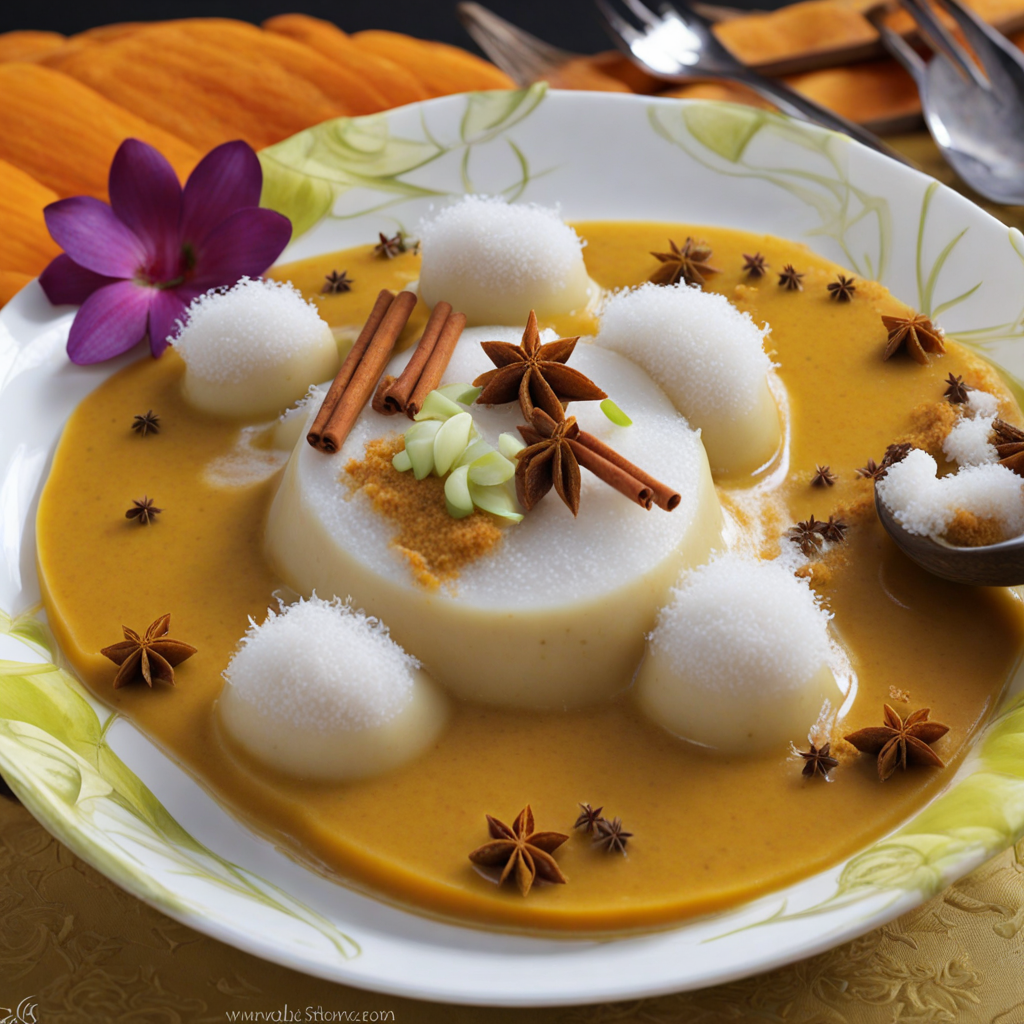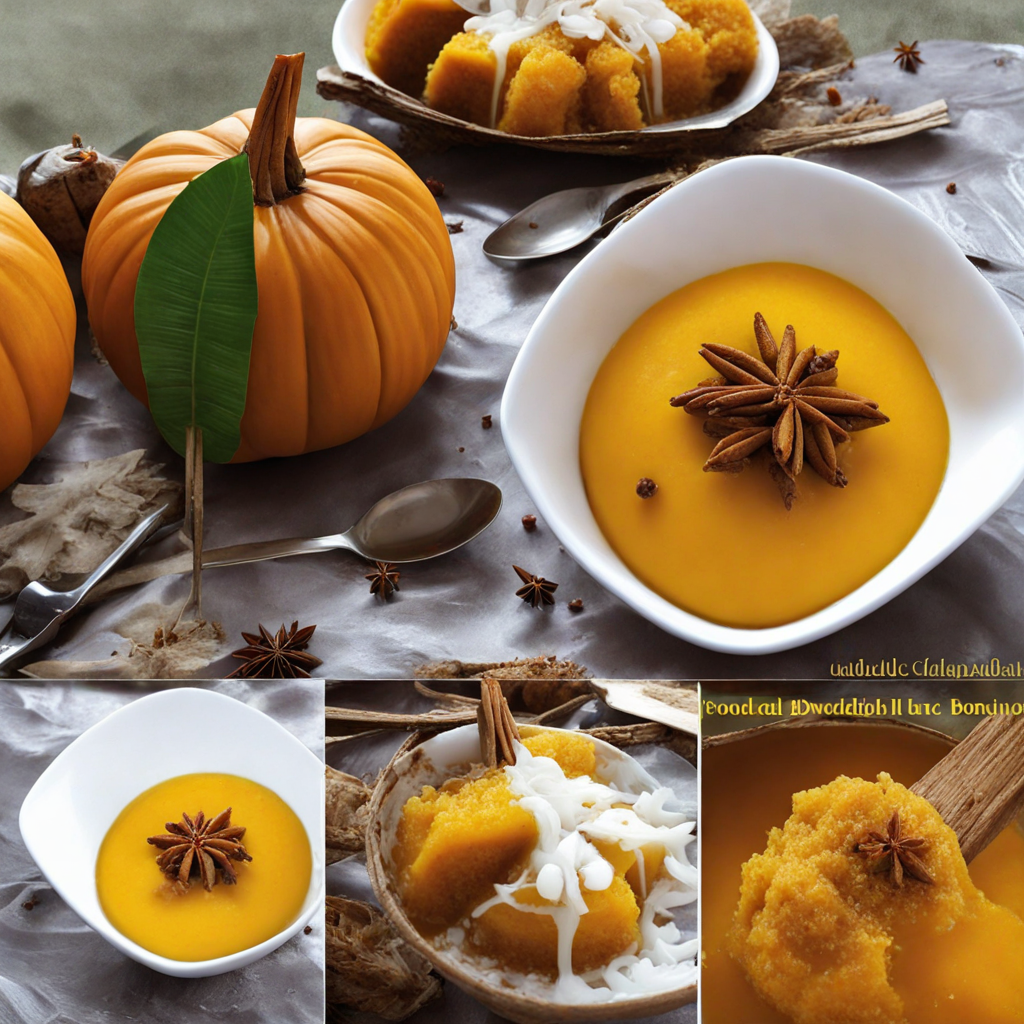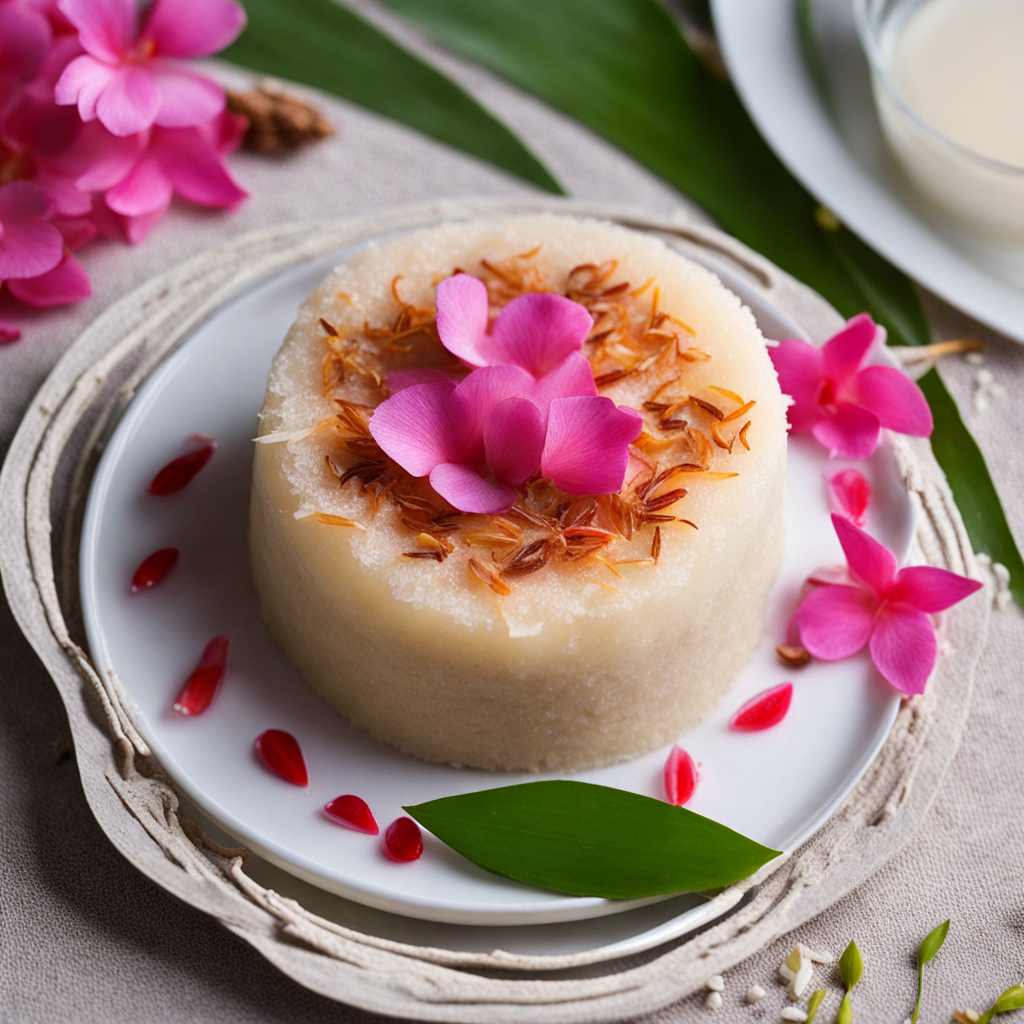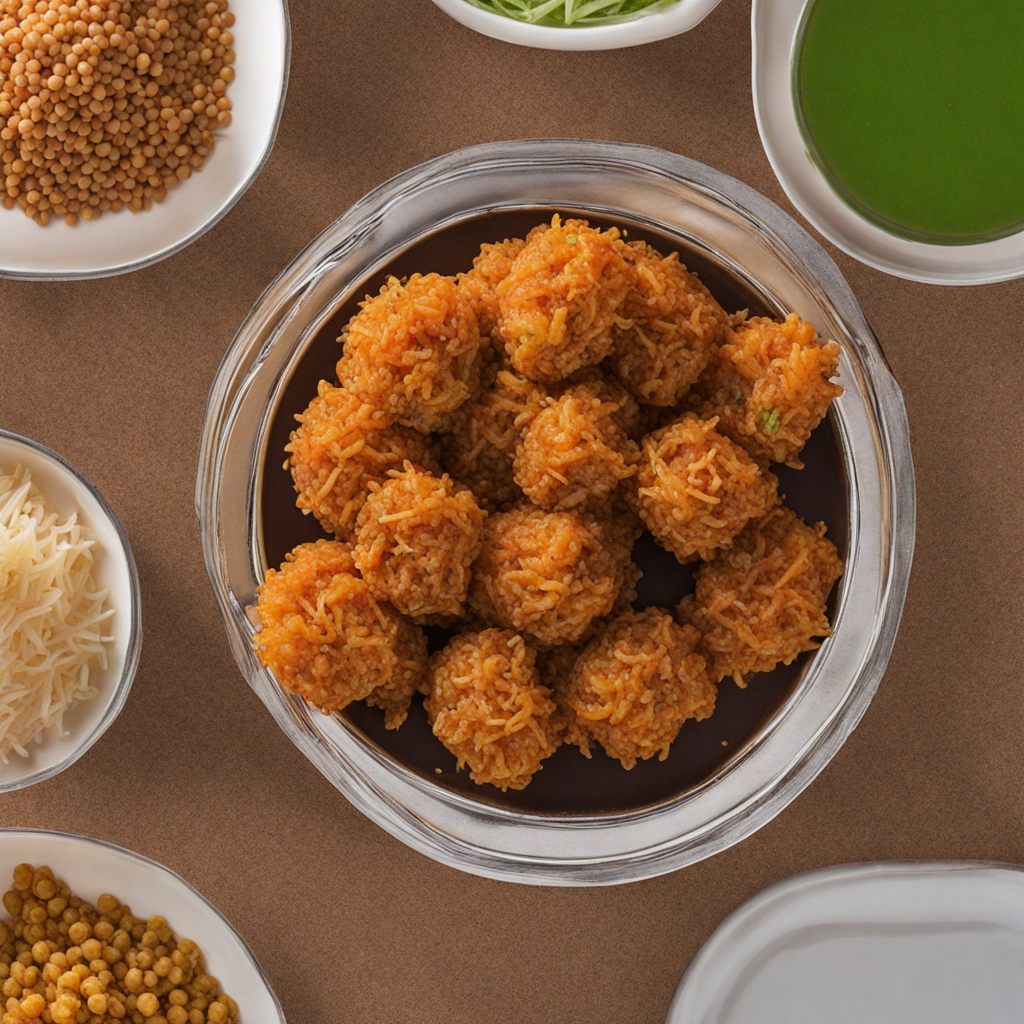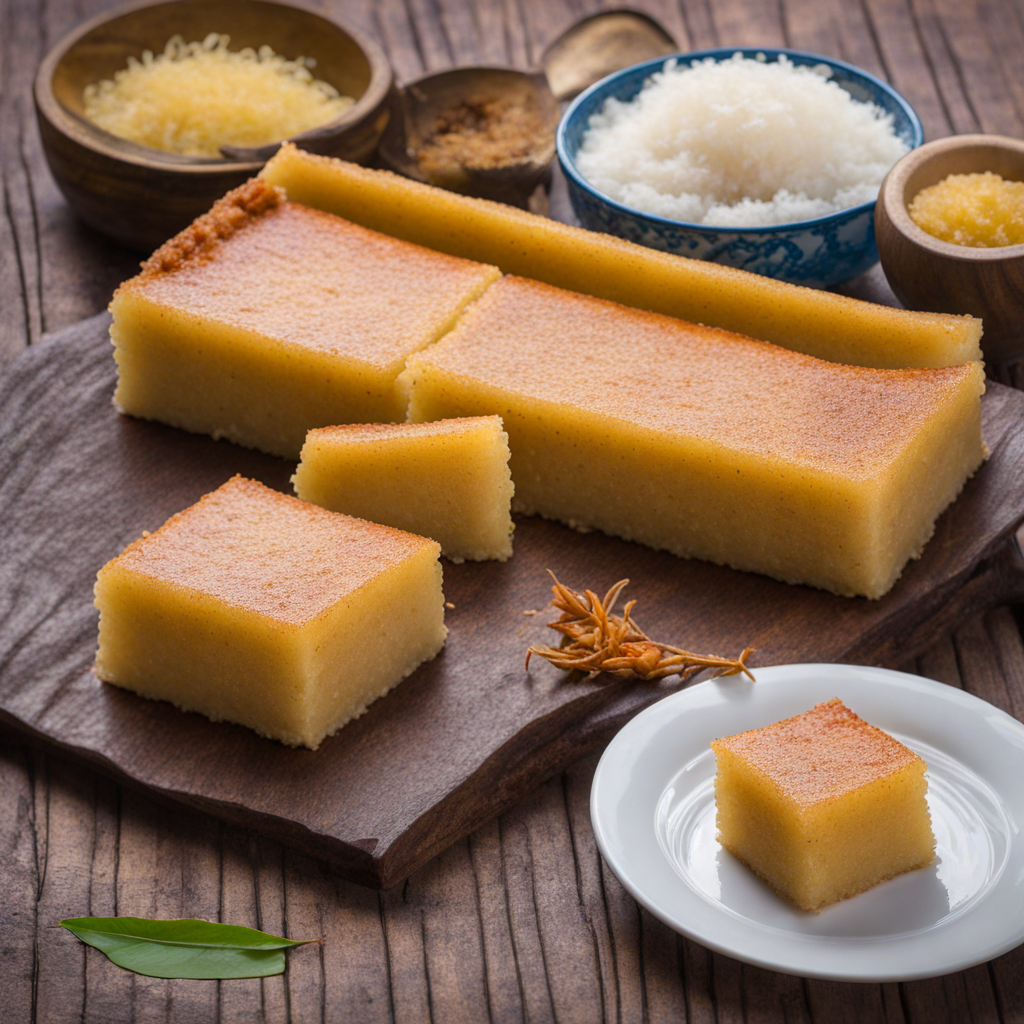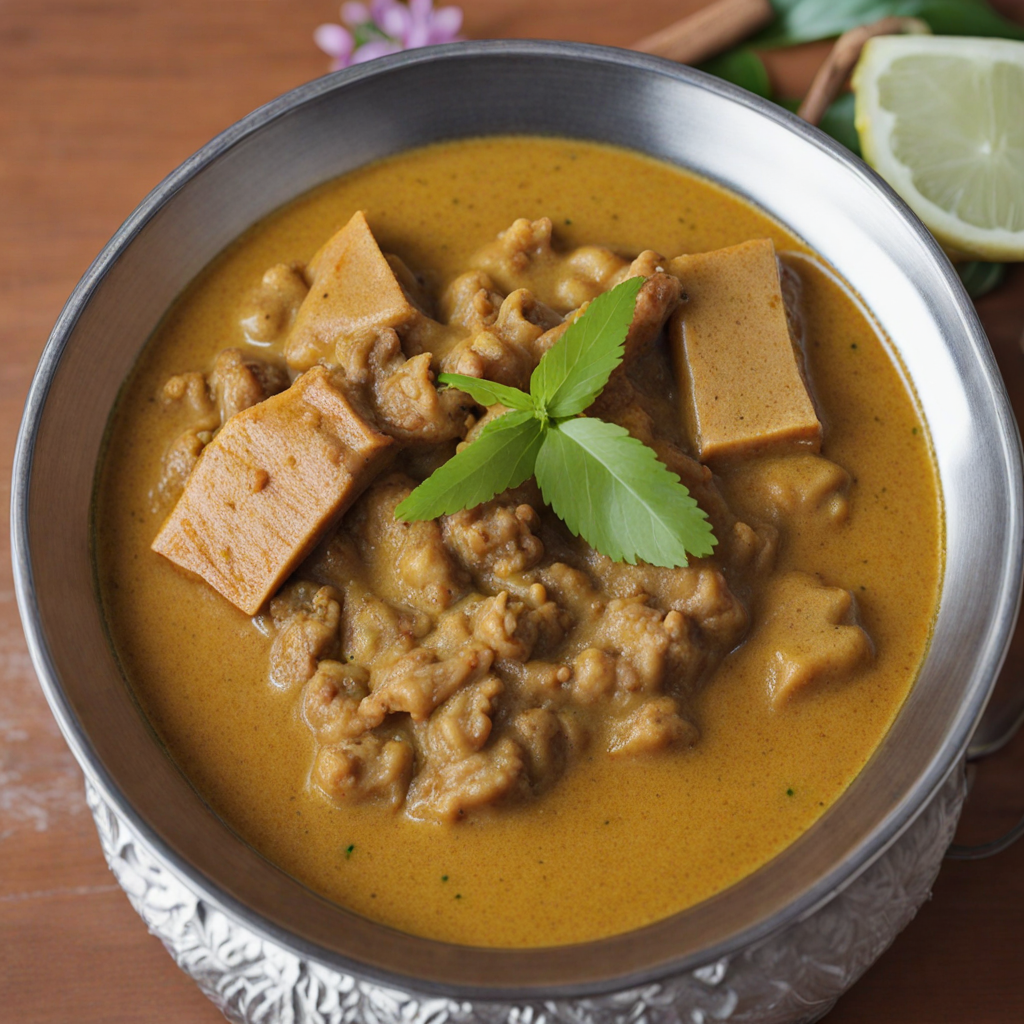Han'dulu Bondibai
Handoo Hulhu Bondibey, commonly known as the Maldivian fish cake, is a traditional delicacy that embodies the rich culinary heritage of the Maldives. This dish is significant not only for its delightful taste but also for its historical roots, reflecting the islands' reliance on fresh seafood and communal cooking practices. The Maldives, surrounded by the vast Indian Ocean, has a long-standing fishing culture, and Handoo Hulhu Bondibey showcases the importance of fish in Maldivian cuisine. The preparation of Handoo Hulhu Bondibey involves a careful blending of ingredients that highlight the freshness of the local catch. The primary ingredient is tuna, often skipjack or yellowfin, which is a staple fish in Maldivian waters. The fish is first boiled and then flaked into fine pieces. This method ensures that the fish retains its moisture and flavor, which is crucial for the final texture of the fish cakes. Alongside the tuna, grated coconut, onions, and various spices such as chili, turmeric, and salt are added to the mix, enhancing both flavor and aroma. The flavor profile of Handoo Hulhu Bondibey is a harmonious balance of savory and slightly sweet notes, thanks to the natural sweetness of the tuna and coconut. The spices provide a subtle kick, creating a complex and satisfying taste. The addition of fresh herbs like coriander or curry leaves can also elevate the dish, adding an aromatic freshness that complements the richness of the fish. The use of
How It Became This Dish
The Culinary Journey of ހަންދުޅު ބޮންޑިބޭ (Handulu Bondibaiy) Origin and Historical Context Handulu Bondibaiy, a traditional dish from the Maldives, represents a fascinating convergence of the archipelago's unique geography, cultural exchanges, and culinary evolution. The Maldives, a tropical paradise in the Indian Ocean, comprises 26 atolls made up of over 1,000 coral islands. Its history is steeped in trade, maritime exploration, and cultural diffusion, all of which have profoundly influenced its culinary landscape. The origins of Handulu Bondibaiy can be traced back to the Maldivian practice of using local ingredients and traditional cooking methods. The dish primarily features *bondibaiy*, which is a type of rice that is often flavored with coconut and seasoned with spices like cardamom and cinnamon. The term “Handulu” refers to the method of cooking the rice using coconut milk, a staple ingredient in Maldivian cuisine. Coconut palms thrive abundantly in the Maldives, making coconut a fundamental element in both food and culture. The Maldivian diet has historically revolved around fish, rice, and coconut—three ingredients that are abundant in the region. The reliance on fish, primarily tuna, is a reflection of the islands' maritime heritage. Handulu Bondibaiy embodies this cultural significance, as it often incorporates local fish in its preparation, showcasing the Maldivians' relationship with the sea. Cultural Significance Handulu Bondibaiy is more than just a dish; it is a symbol of Maldivian hospitality and tradition. Traditionally served during festive occasions, family gatherings, and communal celebrations, it reflects the cultural ethos of sharing and togetherness. The preparation of this dish has often been a communal activity, where families come together to create it, thus reinforcing bonds and preserving culinary heritage. The dish also serves as a reminder of the Maldivian way of life, rooted in simplicity and the bounties of nature. The use of fresh, locally-sourced ingredients aligns with the traditional Maldivian principle of sustainability. The emphasis on communal dining and sharing the meal fosters a sense of community, which is central to Maldivian culture. Development Over Time As the Maldives has evolved through various historical phases—colonial influences, globalization, and tourism—the culinary practices surrounding Handulu Bondibaiy have also transformed. The arrival of different cultures and peoples has introduced new flavors and techniques, leading to a gradual fusion of traditional and modern culinary practices. During the colonial period, the influence of Portuguese and later British settlers introduced new cooking methods and ingredients that began to blend with indigenous practices. The incorporation of spices from the Indian subcontinent and Southeast Asia became evident in Maldivian cuisine, including in dishes like Handulu Bondibaiy. While the core of the dish remained the same, the flavors began to expand, incorporating elements that enriched its profile. In recent decades, the rise of tourism in the Maldives has further influenced the culinary landscape. Tourist demand has led to the development of new interpretations of traditional dishes, including Handulu Bondibaiy. Restaurants across the islands have started to offer modernized versions of the dish, often presenting it with a fusion of international flavors and contemporary plating styles. While these adaptations can sometimes overshadow the traditional methods, they also play a role in keeping the dish relevant in a globalized culinary landscape. As the Maldives continues to embrace its identity as a premier tourist destination, Handulu Bondibaiy stands out not only as a culinary delight but as a storytelling medium that encapsulates the history, traditions, and values of the Maldivian people. It serves as a bridge between the past and present, allowing both locals and visitors to connect with the rich heritage of the islands. Modern Interpretations and Global Influence In contemporary Maldivian cuisine, Handulu Bondibaiy has found its way into the menus of high-end resorts and restaurants, where chefs are eager to highlight local flavors while catering to an international audience. This trend has led to innovative presentations that blend traditional recipes with modern culinary techniques. Chefs might incorporate local seafood such as tuna or lobster, alongside the rice, or enhance the dish with gourmet garnishes, transforming it into a fine dining experience. Despite these modern adaptations, many Maldivians continue to prepare Handulu Bondibaiy in traditional ways, especially during cultural festivals and family gatherings. The dish remains a staple in home kitchens, often passed down through generations. Home cooks emphasize the authenticity of the preparation, ensuring that the original flavors and methods are preserved. Furthermore, the global interest in Maldivian cuisine has sparked a renewed appreciation for Handulu Bondibaiy and other traditional dishes. Food enthusiasts and chefs around the world are increasingly exploring the concept of local and sustainable cooking, drawing inspiration from the Maldivian philosophy of utilizing fresh, seasonal ingredients. This has led to a wider recognition of Handulu Bondibaiy as an emblem of the Maldives' culinary heritage. Conclusion Handulu Bondibaiy is emblematic of the Maldives' rich historical tapestry, reflecting the islands' geographical bounty and cultural evolution. From its humble beginnings as a traditional dish cooked with local ingredients to its modern interpretations served in upscale restaurants, Handulu Bondibaiy continues to be a vital part of Maldivian identity. As we savor this dish, we not only enjoy a delightful taste of the Maldives but also partake in a centuries-old narrative that celebrates community, tradition, and the enduring connection between the land and its people. Whether enjoyed on a sandy beach or at a family gathering, Handulu Bondibaiy remains a cherished culinary treasure that speaks to the heart of Maldivian culture.
You may like
Discover local flavors from Maldives


